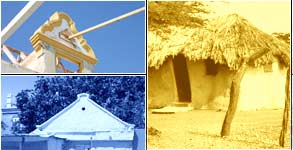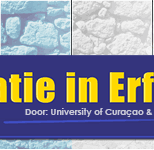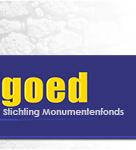|
In this part the basic knowledge acquired in part I
of ‘Education in Heritage’ is further elaborated
on. In part II the regulation and legislation in the
field of conservation of monuments and restoration will
be expanded on, as well as on the techniques and materials
to be used. The course will contain a practical 14-week-part,
during which under guidance of a lecturer the participant
will go and measure a monument and learn how to make
a plan for the restoration and renovation of the monument.
Simultaneously the participant will receive the necessary
theoretical background information to be able to set
up a restoration and renovation plan in the form of
guest lectures delivered by different professionals.
In order to participate in part II, the participant
must have taken part I: Education in Heritage successfully.
Given that the measuring and documenting of a monument
is part of this exercise, the practical part of it will
take place during the day. It is also possible to participate
in the theoretical part only, which will be in the evening
hours. The course is particularly focused on clients
(occupants / owners), designers or contractors who are
involved in the restoration, but is also open to others,
especially the theoretical part of it. This course is on bachelor’s level as well. The language of conduct is Dutch.
Below follows an overview of the topics (Guest teachers can be diffrent in future meetings):
| Meeting 1 |
International
starting points when restoring;
Objective: Getting insight into the importance
of the use of restoration guidelines. Topic: Origin
of monument guidelines in Western Europe; Charter
of Venice.
Docent: drs. G. Gehlen
|

| Meeting 2 |
Setting
up a technical restoration plan;
Objective: Getting insight into the drafting
of a restoration plan. Topics: As built drawings,
formulating starting points, functional and technical
setup of a restoration plan; guidelines MB/MFC
Docent: ir. A. van der
Woude |

| Meeting 3 |
Starting
points when restoring in Curaçao;
Objective: Getting insight into the way of
restoring with preservation of the authenticity
as much as possible. Topics: Filling in of the international
restoration guidelines in Curaçao. Practical
problems regarding authenticity when restoring.
Docent: drs. G. Jonkhout-Gehlen
|

| Meeting 4 |
Historic
building materials and construction techniques in
Curaçao;
Objective: Getting insight into the building
materials formerly used and the know-how of their
application. Topics: Ceramic materials, natural
stone, stacking techniques, wood, roof constructions,
floors, windows, doors, hinges and locks.
Docent: ir. M.A. Newton |

| Meeting 5 |
Practical
realization of a restoration plan;
Objective: Introduction to the practice of
restoring. Topic: The restoration practice by means
of a case study.
Docent:ir. A. van der
Woude |

| Meeting 6 |
Introduction
to Conservation of monuments internationally;
Objective: Getting insight into the origin
of the conservation of monuments in Europe and the
further global development. Topics: Origin and development
of the conservation of monuments in Italy, England,
France and The Netherlands. Origin and development
of the conservation of monuments in the Caribbean
region. International organizations active in the
field of conservation of monuments (UNESCO, ICOMOS)
Docent: drs. F. Bosch-Kruimel |

| Meeting 7 |
Introduction
to conservation of monuments in Curaçao;
Objective: Getting insight into the origin
of the conservation of monuments in Curaçao.
Topics: The first developments in the first half
of the 20th century. Origin of the different monument
organizations. The development of the government
policy.
Docent: drs. G. Gehlen
|

| Meeting 8 |
Monument
legislation in Curaçao;
Objective: Introduction to the legislation
in Curaçao for conservation of historical
monuments and townscapes. Topics: Monument Island
Ordinance; Island Development Plan; Building and
Housing Ordinance; Criteria for the listing as protected
monuments; Register of protected monuments; Permits.
Docent: ir. C. Gonzalez-Manuel |

| Meeting 9 |
UNESCO
World Heritage;
Objective: Getting insight into the criteria
and procedures for registration on the World Heritage
List. Topic: The registration of Willemstad on the
World Heritage List.
Docent:ir. C. Gonzalez-Manuel |

| Meeting 10 |
New
architectural additions to/near monuments;
Objective: Getting insight into the different
aspects playing a role in case of new construction
in historic surroundings. Topic: Raising different
ways in which additions can take place and the influence
on the monument and the surroundings.
Docent: ir. L. Juliana |
|





